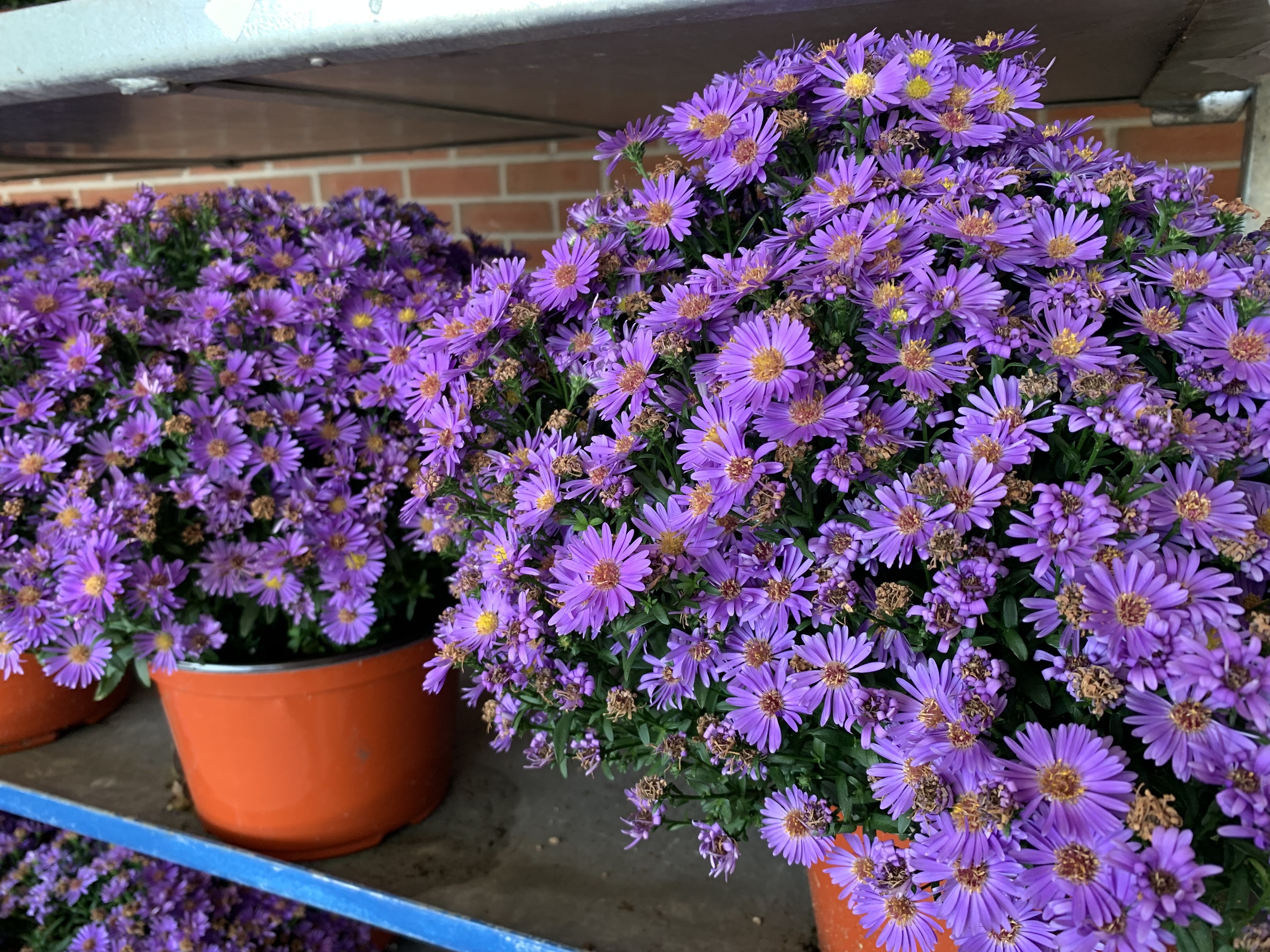Notes from the Garden

Purple Asters
Writing this in September, I still revel in the beauty of our summer bloomers, with a keen
awareness of the approaching fall. One of the late summer perennials which I’ve always
enjoyed is the chelone, commonly known as the
turtlehead, a native North American plant with flowers which resemble a turtle’s head. I am
grateful to the neighbor who shared a few of his plants years ago, and they’ve multiplied
beautifully. Watching bees enter the hooded tunnel of each blossom underlines the importance
of turtleheads to pollinators, as they provide a valuable late-season nectar source for butterflies
and hummingbirds as well. Historically, they were used to make a tonic for indigestion and to
stimulate appetite. They are not toxic to pets or humans, and the bitter compounds in their
leaves deter grazing by deer and other herbivores. A few feet away from this lovely purple
patch is a ravaged shade garden. Returning from a 10-day trip, I was annoyed at best to see
hostas victims of deer.
That said, among other plants which were untouched were the Alchemilla Mollis (Lady’s
Mantle) due to its fuzzy leaves, which both rabbits and deer avoid. Fellow BGC member, Ann
Gralnek introduced me to the attractive ground cover Ajuga, also known as bugleweed, and is
less known as Carpenter’s Herb due to its historic use in staunching bleeding. It, too, was not
disturbed, possibly because its leaves are unpalatable. This perennial plant features very dense
foliage in various colors, usually a combination of green and burgundy, and produces spikes of
vivid blue blooms in spring. This dense mat of leaves suppresses weeds, thrives in shade, and, is
relatively drought tolerant. Unfortunately, is not native to our area, and was actually
mentioned in 16th century editions of Pliny the Elder’s Historia naturalis. This 37-book Latin
encyclopedia of the natural world was compiled from ancient texts around 77AD. Linnaeus
established the genus Ajuga in 1753.
Not to be overlooked at this time of year is the autumn-flowering aster, (pictured), also
known as Michaelmas daisies. The explosion of pink, purple and blue stave off the melancholy
of late autumn while providing a vital source of nutrients for pollinating insects. This perennial
plant requires little annual care and New England asters have excellent mildew resistance.
BGC’s November meetings always feature floral design in anticipation of the winter holidays
and is a favorite presentation of members and guests. The Thursday, November 20 program
theme, “Three Exciting Holiday Floral Designs”, will be presented by floral designer Michael
Derouin at 1:00PM at the Barrington Public Librray. Michael Derouin will blend his knowledge
and experience with humor while creating three holiday/winter designs, sharing insights into
the inspiration, mechanics and details behind each.
BGC meetings are open to the public at no cost and are normally held on the third
Tuesday of the month (This year’s November meeting will be held on a Thursday)
except December, and May through August. For more information about attending
meetings or becoming a club member, send an email to BarringtonRIGardenClub@gmail.com
or visit the club’s website: BarringtonRIGardenClub.org